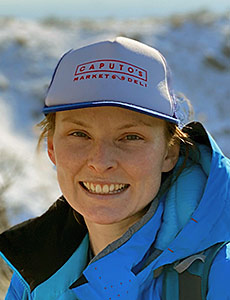Quantifying magnetofossil assemblages: Implications for paleoecology, diagenesis, and past, present, and future global change

Abstract
Non-destructive, inexpensive, and widely available magnetic measurements on bulk sediments can often detect environmentally-sensitive biogenic magnetite and magnetofossils. Although some studies associate different magnetic signatures to redox-sensitive magnetofossil preservation, a mechanistic relationship between distinct magnetofossil sizes and morphologies, their magnetic fingerprints, their marine ecology, and their taphonomy is missing. I will test the relationship between magnetically unmixed magnetofossil signatures, distinct magnetofossil sizes, and morphologies, and marine redox conditions recorded in a coastal marine depth transect of archived IODP materials. Specifically, I will use visual observation of magnetofossils and statistical analyses that compare magnetic magnetofossil signatures to well-studied benthic foraminifera biomarkers and marine geochemical proxies for productivity and sedimentary redox conditions. The methods developed and tested herein will be broadly applicable to other IODP archives.
Biography
My lifelong interest in geobiology began where I grew up, in the Adirondack Mountains of Upstate New York. I was drawn to the fascinating world of magnetotactic bacteria (microbes that make tiny magnetic particles) through undergraduate research at the University of Rochester. For my Ph.D. research at the University of Utah, I am studying the extent to which we can use magnetotactic bacteria to fingerprint specific environmental conditions in aquatic environments. For example, I am testing whether we can use the fossil remains of ancient magnetotactic bacteria to understand how marine oxygen levels change during periods of rapid global change. My own experience as a first-generation student from a rural community inspires me to make science accessible and relevant to everyone. I enjoy sharing my research with the public and practicing my science communication skills. I especially like sharing how my work will help us predict how today’s oceans will respond to climate change. In addition to playing with microbes and magnets, I also enjoy backpacking, soccer, skiing, yoga, and painting.






